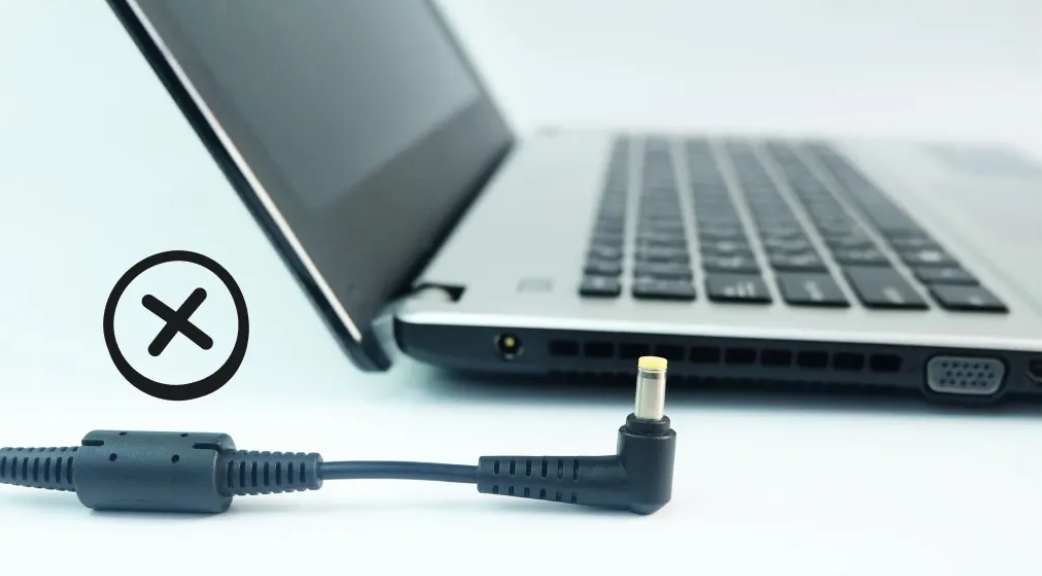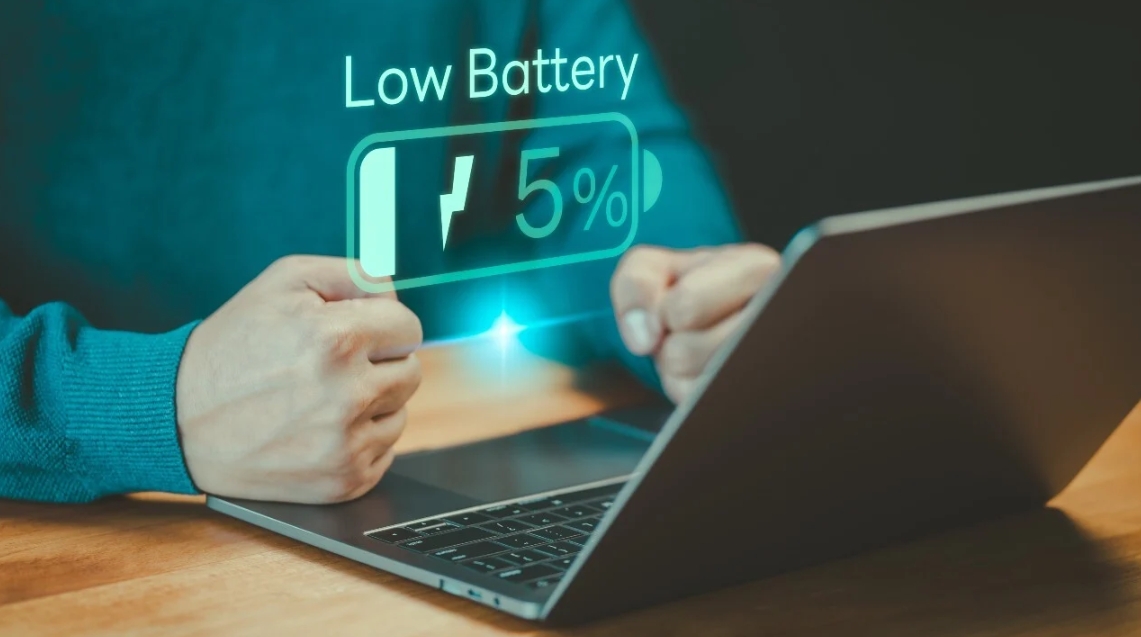
It can be frustrating when your HP laptop suddenly stops charging, especially when you need it for work, study, or entertainment. Many users wonder, "why is my HP laptop not charging?" This issue can arise from various factors, including power source inconsistencies, a damaged charger, a faulty battery, or outdated system drivers. Before assuming the worst, it’s essential to systematically diagnose the problem. By identifying the root cause, you can apply the correct solution and potentially avoid unnecessary repairs. This guide walks you through a structured troubleshooting process to help you resolve the issue efficiently. Whether it’s cleaning the charging port, checking battery health, or updating system software, these steps will ensure your HP laptop gets back to normal charging functionality.

Common Causes of HP Laptop Charging Issues
Power Source and Connection Problems
A primary reason for charging failure is an unreliable power source or loose connections. If your laptop is not charging, start by ensuring the wall outlet is functional. Try plugging another device into the same socket to confirm it is supplying power. If the outlet works, check that the charger is securely connected to both the laptop and the power adapter. Additionally, examine the charging port on your laptop. Over time, dirt and debris can accumulate, obstructing a proper connection. Use a can of compressed air or a soft brush to clean the port. If you notice any damage or looseness in the charging port, professional repair may be required. A secure and stable connection is crucial to ensure uninterrupted charging.
Damaged Charger or Power Cable
Physical wear and tear on the charging cable and power adapter is another common culprit. Check for visible damage, such as frayed or exposed wires, bent connectors, or a loose adapter brick. A damaged charger may fail to transmit power efficiently, leading to inconsistent or failed charging. To determine if your charger is faulty, test it with another compatible HP laptop. If the second device also does not charge, it’s a strong indicator that the charger needs to be replaced. Additionally, avoid using third-party chargers, as they may not deliver the correct voltage, potentially harming your laptop’s battery. Always use an original HP-certified charger to prevent charging issues and ensure long-term laptop performance.
Battery Health Degradation
Laptop batteries naturally degrade over time, reducing their ability to hold a charge. If your HP laptop's battery is several years old, it may no longer function optimally. To check the battery’s health, use HP’s built-in diagnostic tool. Open HP Support Assistant and navigate to the battery check feature to run a detailed report on its condition. Signs of a failing battery include sudden shutdowns, rapid battery drain, or the inability to charge beyond a certain percentage. If diagnostics indicate poor battery health, replacing it with a genuine HP battery is the best solution. Ensure you purchase a battery specifically designed for your laptop model to avoid compatibility issues. Regular battery maintenance, such as avoiding extreme temperatures and preventing deep discharges, can help prolong its lifespan.

Outdated Battery Drivers and BIOS
Your HP laptop's firmware and battery drivers play a critical role in its charging functionality. If these are outdated or corrupted, they can interfere with normal charging processes. Updating battery drivers is straightforward: Open Device Manager, expand the Batteries section, right-click on each driver, and select Update driver. For BIOS updates, visit the official HP support website and locate the latest BIOS version for your specific laptop model. Follow the on-screen instructions carefully while updating BIOS, as incorrect installation may cause system instability. A successful update can resolve power management issues and improve battery performance. Restart your laptop after applying updates to ensure the changes take effect. Keeping your software up to date minimizes charging problems and enhances your laptop’s overall efficiency.
How to Troubleshoot HP Laptop Charging Problems
Step 1: Verify Power Source and Connections
The first troubleshooting step is to check the power source. Plug another device into the same power outlet to confirm it’s working. If the outlet is functional, unplug the charger from your laptop and reconnect it firmly. Ensure that the charging cable is properly inserted into both the adapter and the laptop’s charging port. If your laptop has a charging light, observe whether it turns on when connected. If the light is off, there may be an issue with the power connection. If you’re using a power strip, try plugging the charger directly into a wall socket, as power strips can sometimes cause inconsistent power delivery. If the issue persists, test another HP charger if available. Using an incompatible charger may result in insufficient power, preventing the battery from charging correctly.
Step 2: Inspect the Charger and Cables
Since damaged chargers and power cables are common reasons why HP laptops fail to charge, closely inspect both for signs of wear. Look for frayed cables, bent connectors, or loose power adapter components. If your charger has an indicator light, check whether it illuminates when plugged in. If the light does not turn on, the charger may be defective. Testing the charger with another HP laptop can help determine if the issue lies with the adapter. Additionally, examine the laptop’s charging port for dust, lint, or debris that could be obstructing the connection. If the port appears damaged, you may need professional repair. If replacing the charger fixes the issue, ensure that you only use a genuine HP charger, as non-certified power adapters can cause long-term damage to your battery and laptop hardware.
Step 3: Check the Battery Health
If your HP laptop still won’t charge, the problem might be with the battery itself. Laptop batteries degrade over time, losing their ability to hold a charge. Symptoms of battery failure include excessive heat, sudden shutdowns, or the laptop only working when plugged in. To check battery health, use HP Support Assistant’s diagnostics tool. This tool provides a battery status report, indicating if the battery needs replacement. If your battery health is poor, it’s recommended to replace it with an official HP battery to avoid performance issues and safety risks. Avoid using third-party batteries, as they may not be fully compatible. Proper battery care, such as avoiding deep discharges and extreme temperatures, can extend the lifespan of a new battery.
Step 4: Update Battery Drivers and BIOS
Software-related issues, such as outdated battery drivers or BIOS firmware, can also cause charging problems. To update your battery drivers, open Device Manager, expand the Batteries section, right-click each listing, and select Update driver. If an update is available, install it and restart your laptop. Updating the BIOS is another crucial step. The BIOS controls power management settings, and outdated firmware can interfere with charging. To update your BIOS, visit HP’s support website, find the latest version for your model, and follow the installation instructions carefully. Be sure to keep your laptop plugged in during the BIOS update to prevent interruptions. Once the update is complete, restart your laptop and check if the charging issue is resolved.
Step 5: Run HP Hardware Diagnostics
If none of the previous steps resolve the issue, running HP’s built-in diagnostic tool can help pinpoint the problem. HP laptops come with the HP PC Hardware Diagnostics tool, accessible through HP Support Assistant. This tool performs various tests to check battery performance, power supply functionality, and potential hardware failures. Run the diagnostics and follow the on-screen instructions. If the tool detects an issue, it will provide recommendations or error codes. These error codes can be used to determine the next course of action, such as battery replacement or professional repair. If the tool finds no issues, but the laptop still isn’t charging, professional assistance may be required to inspect internal components like the motherboard or charging circuits.
Conclusion
HP laptop charging issues can often be resolved through systematic troubleshooting. By checking the power source, verifying cable connections, inspecting the charger, and assessing battery health, you can identify and fix most charging problems. Additionally, keeping software up to date, including battery drivers and BIOS, can prevent software-related charging issues. Regular maintenance and proper charging habits help extend battery life and minimize failures. If none of the troubleshooting steps work, seeking professional assistance is recommended. Ignoring persistent charging issues can lead to further damage and costly repairs. Whether it's a failing battery, outdated software, or a hardware issue, addressing the question "why is my HP laptop not charging?" early ensures your device continues to function optimally.
FAQ
How do I know if my HP laptop charger is faulty?
Check the charger for visible damage, such as frayed wires or bent connectors. If it has an indicator light that doesn’t turn on when plugged in, it may be faulty. Test it with another HP laptop to confirm.
Can a BIOS update fix charging issues on my HP laptop?
Yes, updating the BIOS can resolve power management issues. Always download BIOS updates from HP’s official website and follow the installation instructions carefully.
How often should I replace my HP laptop battery?
HP laptop batteries typically last 2-3 years. If your battery drains quickly or fails to charge, consider replacing it with an original HP battery.